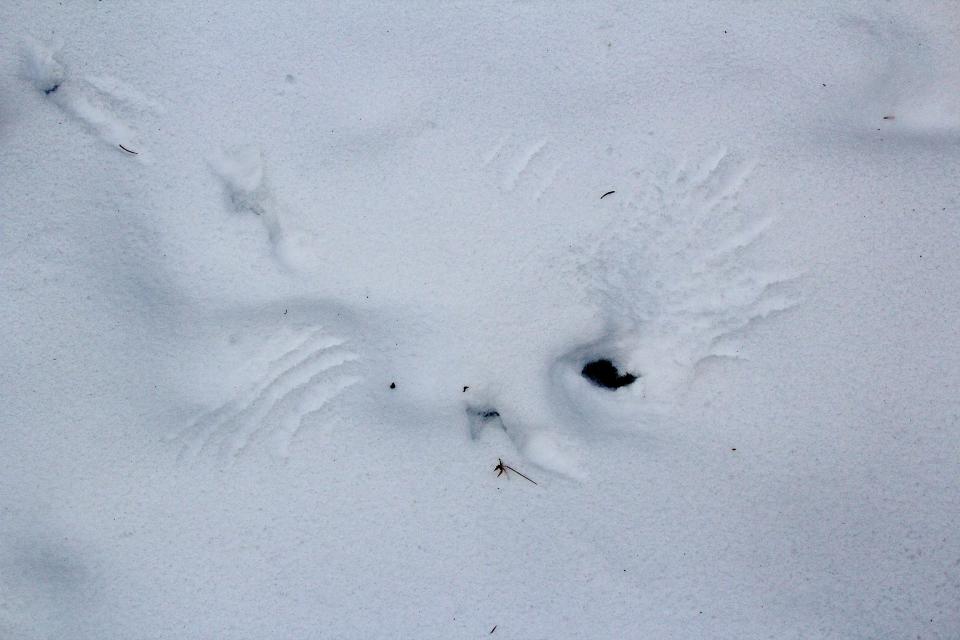Smith: Wisconsin ruffed grouse drumming is down, signaling a low in the population cycle
An annual survey detected less drumming by ruffed grouse in Wisconsin this spring, the latest indication the species has entered a lower stage of its population cycle, according to Department of Natural Resources wildlife managers.
The 2023 ruffed grouse drumming survey was released Wednesday by the DNR.
The species' population is tracked by counts of drumming males as they attempt to attract a mate in spring. The sound of the birds rapidly beating their wings can be heard over long distances.
The DNR report showed declines in each region and a year-over-year drop of 11% statewide.
More: Outdoors calendar
In northern Wisconsin, home to the best ruffed grouse habitat in the state, 1.45 drums per stop were detected for a 9% decline from 2022.
Meanwhile 0.29 drums per stop were recorded in the central forest (down 26%) and 0.06 drums per stop were counted in the Driftless Area (down 14%).
The data "were consistent with our expectation that we are in the low period of the cycle over the past two years," Taylor Finger, DNR game bird specialist, said in an email.
Ruffed grouse is a native species popular with upland bird hunters and wildlife watchers in Wisconsin. The Badger State, along with Michigan and Minnesota, hold the strongest remaining populations of ruffed grouse in the continental U.S.

The species has a distinctive population cycle long noted by biologists. Ruffed grouse numbers rise and fall over a nine- to 11-year cycle, and the last peak in Wisconsin's cycle occurred in 2011, according to the DNR.
To help monitor the ruffed grouse population in Wisconsin a roadside survey has been conducted annually since 1964. Data are recorded by DNR wildlife personnel, foresters, conservation wardens, tribal biologists, U.S. Forest Service staff and Ruffed Grouse Society volunteers.
This year 91 routes were used to estimate the statewide drumming index.
Forty-nine showed "unchanged" drumming counts, while 24 had decreased drumming and 18 had increases, according to the DNR.
The 2023 ruffed grouse data help complete the picture of the most recent population cycle in Wisconsin which experienced an unusual drop in 2018 of 34% statewide and 38% in the northern region.
Trends in breeding grouse were increasing from 2015 through 2017 and it was assumed Wisconsin was on the increasing portion of the grouse cycle.
The decrease in breeding grouse activity in 2018 spurred an investigation into possible effects of West Nile Virus on ruffed grouse in the region.
In 2021, the final year of a four-year project to assess ruffed grouse for WNV, 25% of birds submitted by hunters in Wisconsin were likely or confirmed to have antibodies to the disease, according to the DNR.
While the disease is known to kill ruffed grouse and dozens of other bird species, and dead ruffed grouse were found in the region with WNV, the cause for the observed ruffed grouse population decline from mid-2017 through 2018 was never determined.
"We did not find any indication that West Nile has had a population level effect on ruffed grouse in Wisconsin," Finger said.
Ruffed grouse drumming rebounded in 2019. But due to the COVID-19 pandemic, no data were collected in 2020, adding uncertainty to the recent grouse cycle.
With no data for 2020, it is impossible to tell when the last ruffed grouse population peak occurred in the state, according to the DNR.
The 2023 drumming report summarizes it like this: "Whether 2019, 2020, or 2021 was the breeding grouse high will never be determined, but it is likely that Wisconsin as entered the 'down phase' of grouse abundance as it will wane in the coming years until we reach the increasing phase of the cycle."
The report also provides a statement on the "big picture." Like most bird species, ruffed grouse have shown a long-term decline.
In Wisconsin, the annual drumming survey shows this drop since the 1960s.
"Grouse highs are not as high as they have been in the past and the amplitude of the change from low to high, seems to be decreasing," according to the DNR.
Ruffed grouse thrive in areas with young forests. Changing land use patterns and the long-term aging of Wisconsin’s forest are likely contributing to these changes, according to the DNR.
Supporters of ruffed grouse and other species dependent on young forests, including song birds such as the golden-winged warbler, are hopeful goals for active forest management as expressed in the Wisconsin ruffed grouse management plan will be achieved.
THANK YOU: Subscribers' support makes this work possible. Help us share the knowledge by buying a gift subscription.
DOWNLOAD THE APP: Get the latest news, sports and more
in grouse numbers will continue to occur until our forests reach a stasis in their agingprocess or a reversal of this trend can occur.
This article originally appeared on Milwaukee Journal Sentinel: Wisconsin ruffed grouse population down, DNR drumming survey indicates

